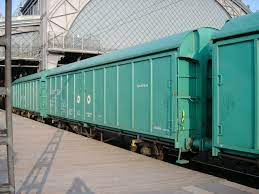Cash Imprest
Authority: 1) Para No.1050 of Indian Railways Finance Code
Volume 1
2) ACS No.83 vide Railway Board Letter
No.2016/F(X)II/10/27 dated 13.03.2018
3)
Item No.1 (A) of Part C of Model SOP (Schedule of Powers)
·
What is the meaning of Imprest in general ? A sum of money advanced to a person for a
particular purpose or A fund used by a
business for small items of expenditure and restored to a fixed amount
periodically (say one month)
·
·
Definition of Cash Imprest by Railways is “ An
Imprest is standing advance of a fixed sum of money placed at the disposal of
an Individual (Officer or Supervisor) to meet the following types of
expenditure.
1.
Petty Office expenses
2.
Cost of raw materials for the diet of Indoor
patients of Hospitals
3.
Emergent charges which cannot be foreseen
4.
Other petty expenses up to an amount of Rs. 15,000 /- in each case subject
to a certificate recorded by procuring official/Imprest holder in the format
given below.
“I am personally satisfied that
these goods are of the requisite quality
and specification and have been purchased from a reliable supplier at a reasonable price”
·
GM has full powers in respect of sanctioning
cash imprest to the Officers & Supervisors.
·
As per Model SOP, PHOD, HOD, DRM, ADRM,CWM &
SAG officers in field units have full powers to sanction the Cash Imprest to
the Officers & Supervisors.
·
Finance concurrence is required for fixing the
Cash Imprest amount.
·
Cash imprest amount to be created purely on the
need basis.
·
Cash Imprest amount to be reviewed periodically.
·
The amount of an Imprest must not be larger than
is absolutely necessary.
·
It should be reckoned at the lowest possible
figure calculated to suffice for meeting the office expenses.
·
Total amount of expenditure through cash imprest
should not be exceeded the Budget grant for the purpose during the year.
·
The Cash Imprest holder may sanction emergent
petty advances out of Imprest money placed at his disposal. ( that is Mini cash
Imprest out of Cash Imprest sanctioned to the Officer/Supervisor)
%%%%
